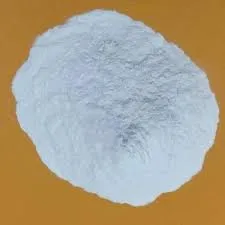
نويابىر . 23, 2024 22:05 Back to list
Discovering HPMC Pricing Trends and Insights for Your Business Needs
Understanding HPMC Prices A Comprehensive Overview
Hydroxypropyl Methylcellulose (HPMC) is a widely used non-ionic, water-soluble polymer that has gained significant traction in various industries, including pharmaceuticals, food, cosmetics, and construction. The prices of HPMC can fluctuate based on several factors, including raw material availability, production costs, market demand, and economic conditions. This article aims to provide a comprehensive overview of HPMC pricing dynamics, factors affecting its cost, and implications for industries that rely on this versatile compound.
The Basics of HPMC
HPMC is derived from cellulose, a natural polymer, and is modified to enhance its solubility and versatility. Its properties, such as thickening, emulsifying, film-forming, and water-retaining capabilities, make it an essential ingredient in a multitude of applications. For instance, in pharmaceuticals, HPMC serves as a binder in tablet formulations and as a controlled-release agent. In the food industry, it acts as a thickening agent and stabilizer, whereas in construction, it's utilized in mortars and adhesives.
Pricing Factors
1. Raw Material Costs The primary raw materials used in the production of HPMC are cellulose and chemicals for modification. Fluctuations in the prices of these raw materials significantly influence HPMC costs. For example, an increase in the price of cellulose due to supply chain disruptions can lead to higher HPMC prices.
2. Production Method and Capacity Different manufacturers may employ various production techniques, impacting production efficiency and costs. Manufacturers that adopt advanced technology may produce HPMC more efficiently and at a lower cost than others who rely on traditional methods. Additionally, economies of scale play a role; larger production capacities can reduce per-unit costs.
3. Market Demand and Supply The balance between supply and demand is a critical factor in determining HPMC prices. If demand for HPMC increases—perhaps due to rising applications in new sectors such as bio-based materials—manufacturers may raise prices. Conversely, if production exceeds demand, prices may decline.
hpmc price

4. Global Economic Conditions Economic factors like inflation, currency exchange rates, and trade policies significantly influence raw material costs and HPMC pricing. For instance, any substantial changes in oil prices can affect transportation costs, impacting overall pricing strategies for manufacturers.
5. Regulatory Environment Compliance with environmental regulations and safety standards can introduce additional costs for HPMC manufacturers. Stricter regulations may require investment in cleaner technologies or processes that can elevate production costs, subsequently leading to higher prices for consumers.
Implications for Industries
The price fluctuations of HPMC can have widespread effects across various sectors. In the pharmaceutical industry, an increase in HPMC prices might lead to higher production costs for medications, which could subsequently impact healthcare costs. Similarly, in the food sector, businesses relying on HPMC as a stabilizing agent may need to reassess their pricing strategies or explore alternative ingredients if costs rise significantly.
In the construction sector, higher HPMC prices can affect the overall cost of building materials and, consequently, construction projects. This can hinder budget allocations and project timelines, emphasizing the need for businesses to remain adaptive in their sourcing strategies.
Conclusion
In conclusion, the pricing of Hydroxypropyl Methylcellulose is influenced by a complex interplay of factors, from raw material costs to global economic conditions. Industries that depend on HPMC must remain vigilant to these pricing trends and be prepared to adapt to fluctuations. Understanding these dynamics not only aids businesses in their operational strategies but also encourages innovation and the exploration of alternative solutions in the face of rising costs. As the demand for HPMC continues to grow globally, staying informed about its pricing will be crucial for stakeholders in all relevant industries.
-
Versatile Hpmc Uses in Different Industries
NewsJun.19,2025
-
Redispersible Powder's Role in Enhancing Durability of Construction Products
NewsJun.19,2025
-
Hydroxyethyl Cellulose Applications Driving Green Industrial Processes
NewsJun.19,2025
-
Exploring Different Redispersible Polymer Powder
NewsJun.19,2025
-
Choosing the Right Mortar Bonding Agent
NewsJun.19,2025
-
Applications and Significance of China Hpmc in Modern Industries
NewsJun.19,2025







